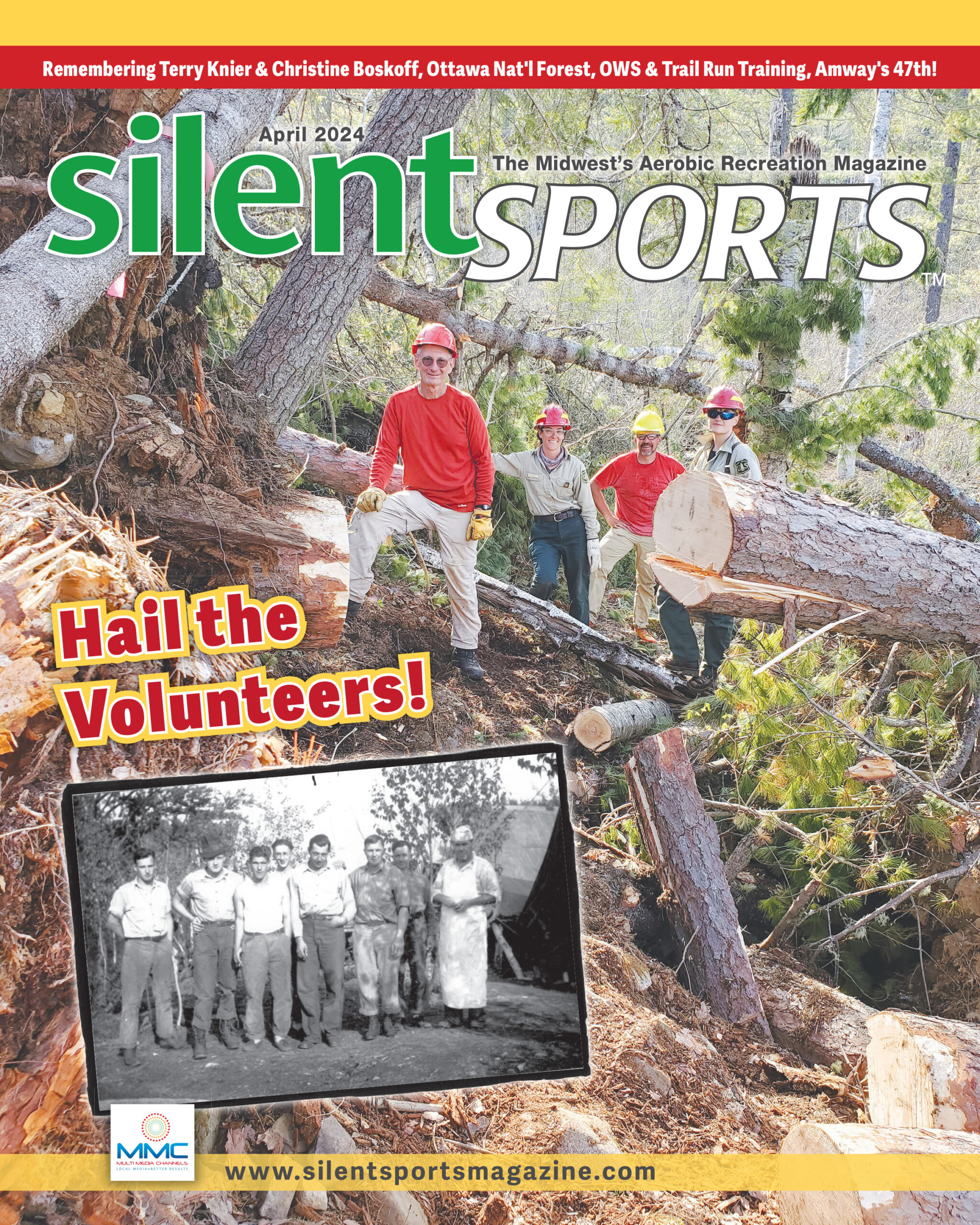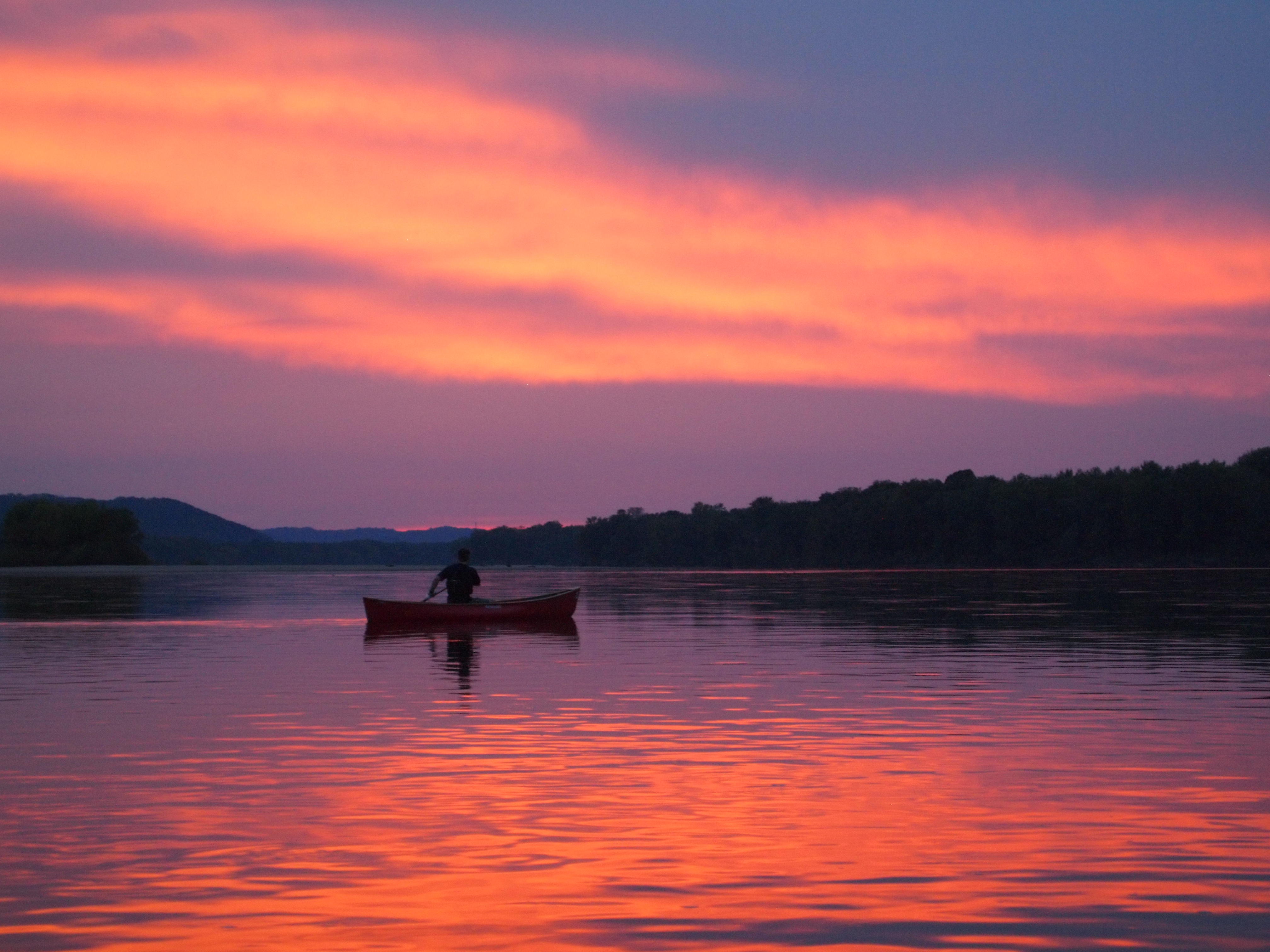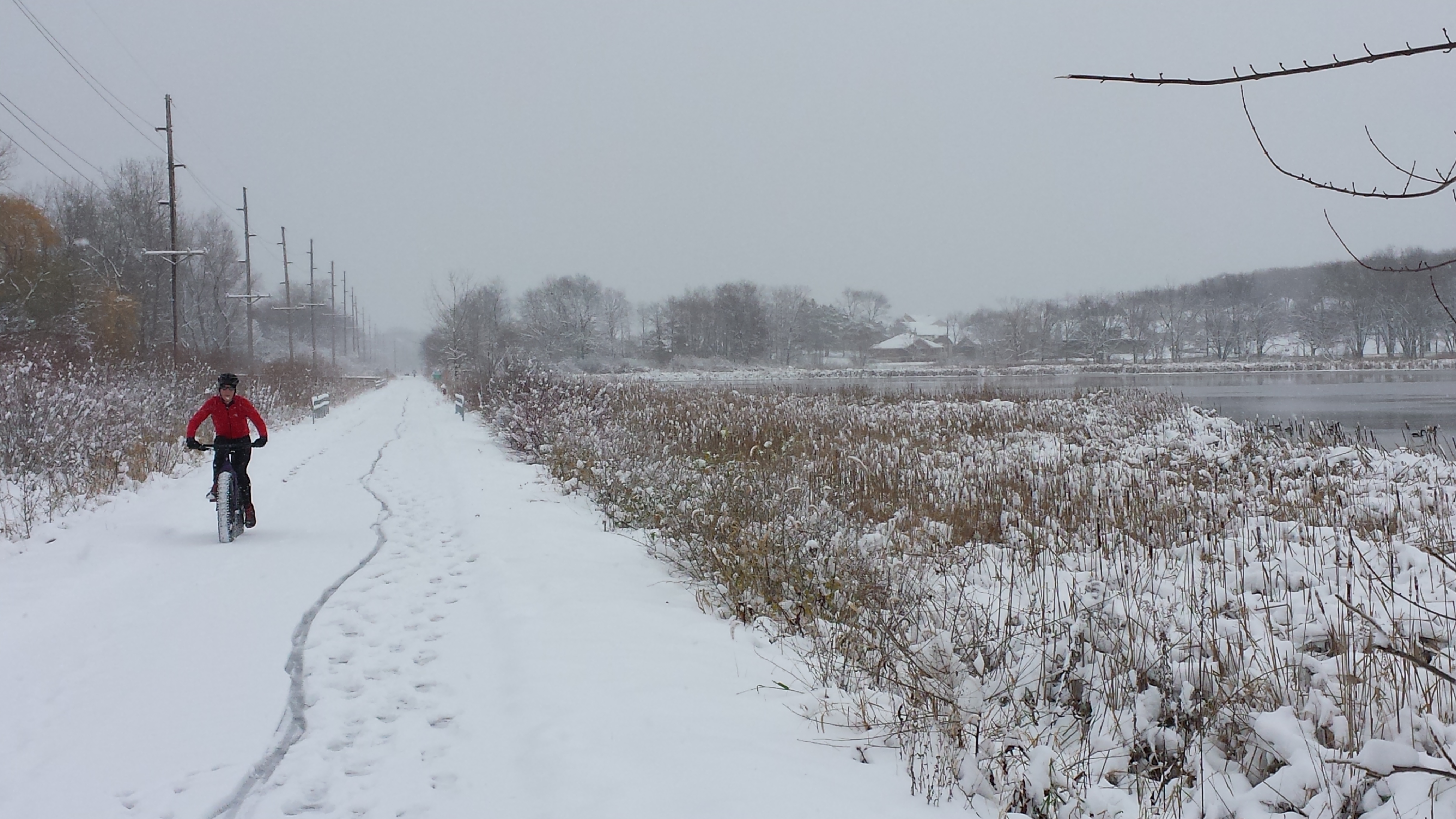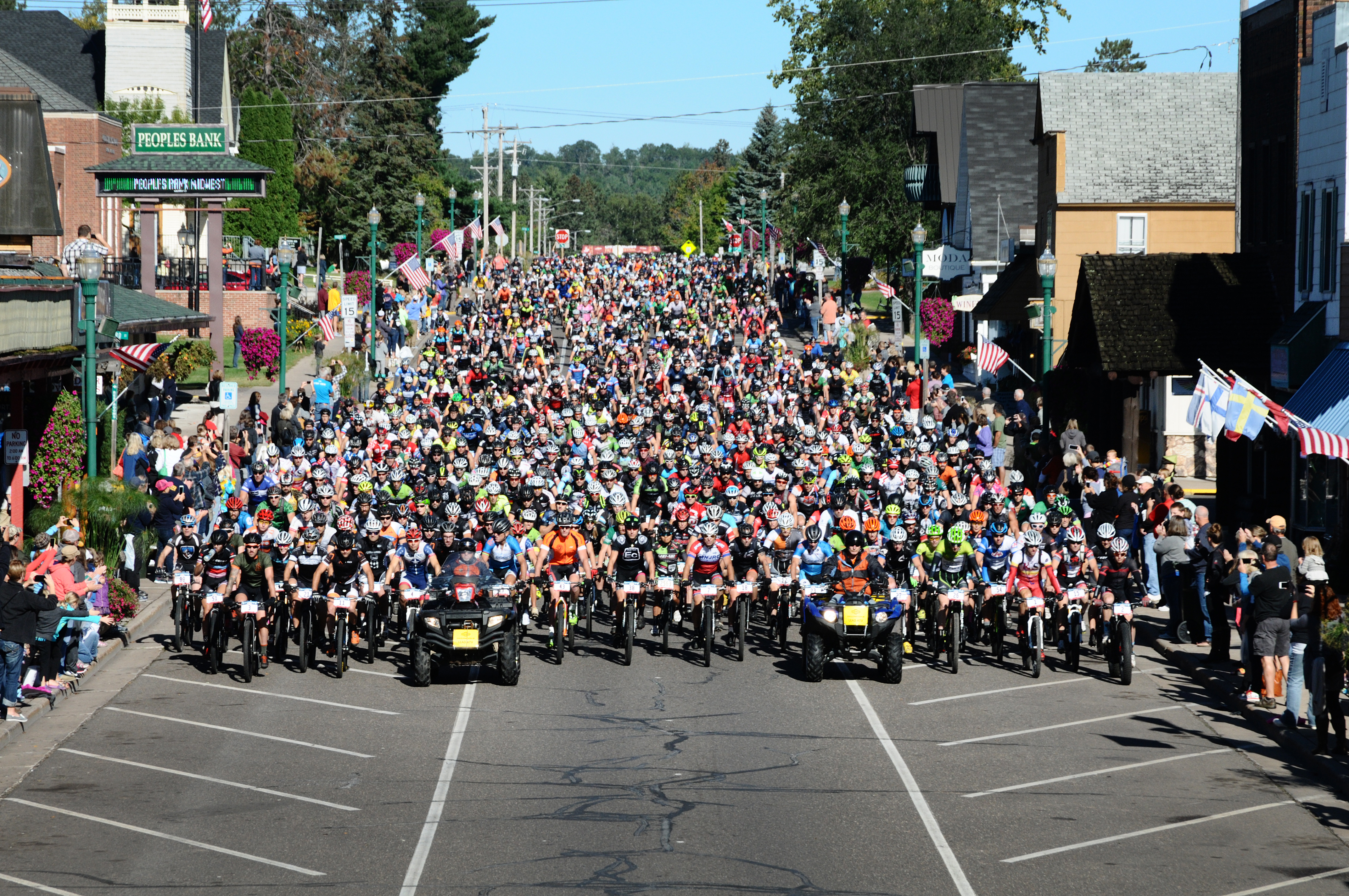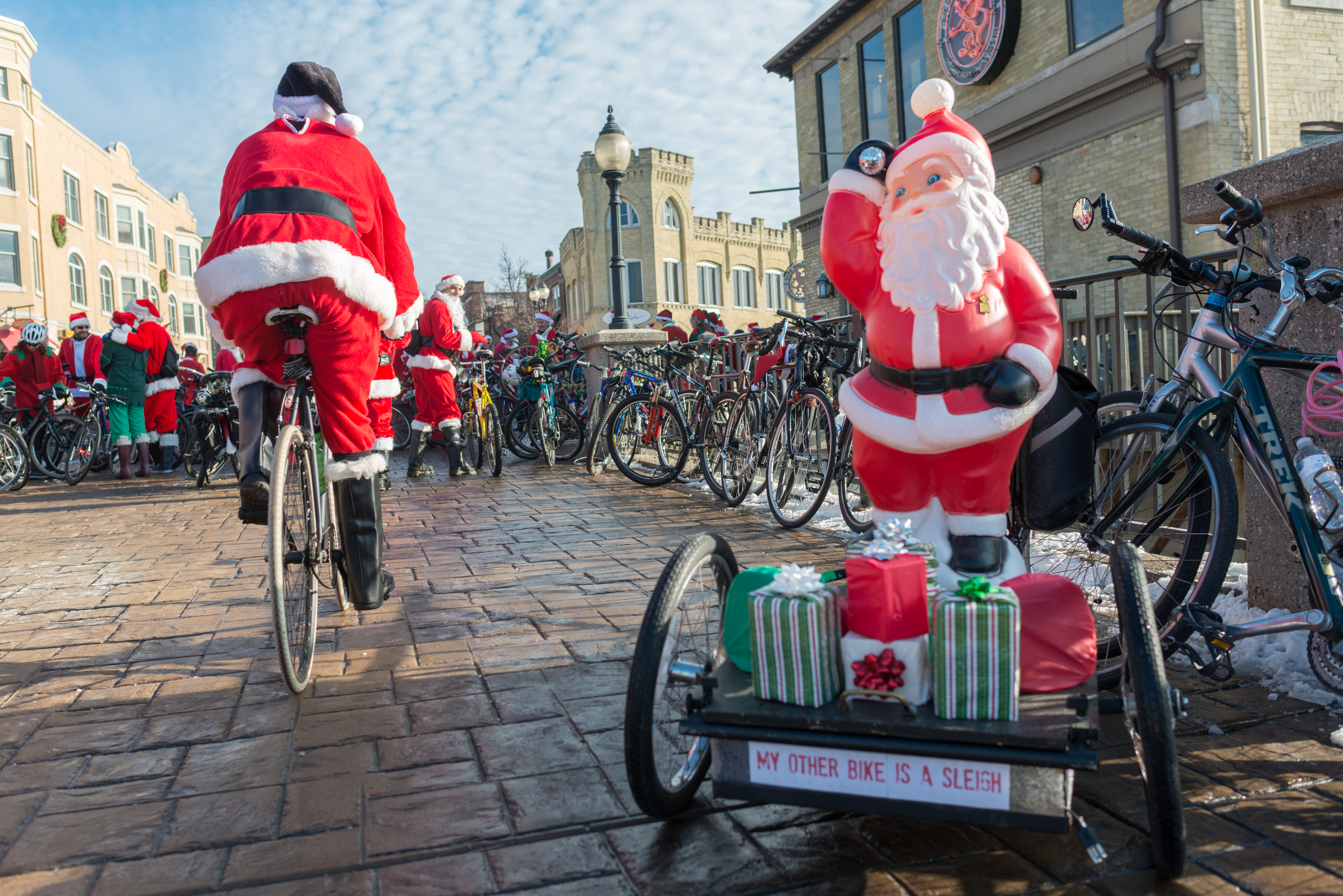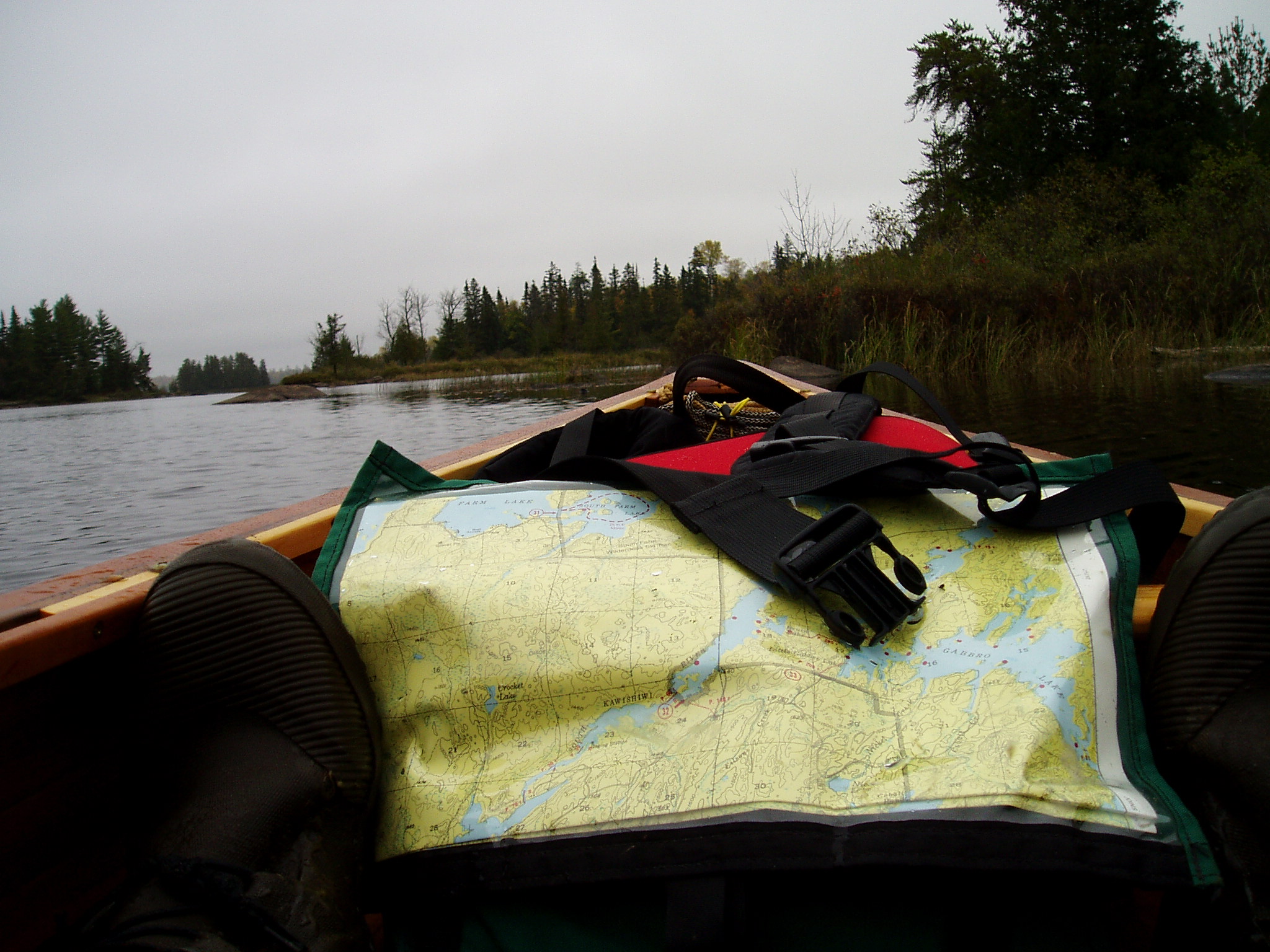My winter obsession
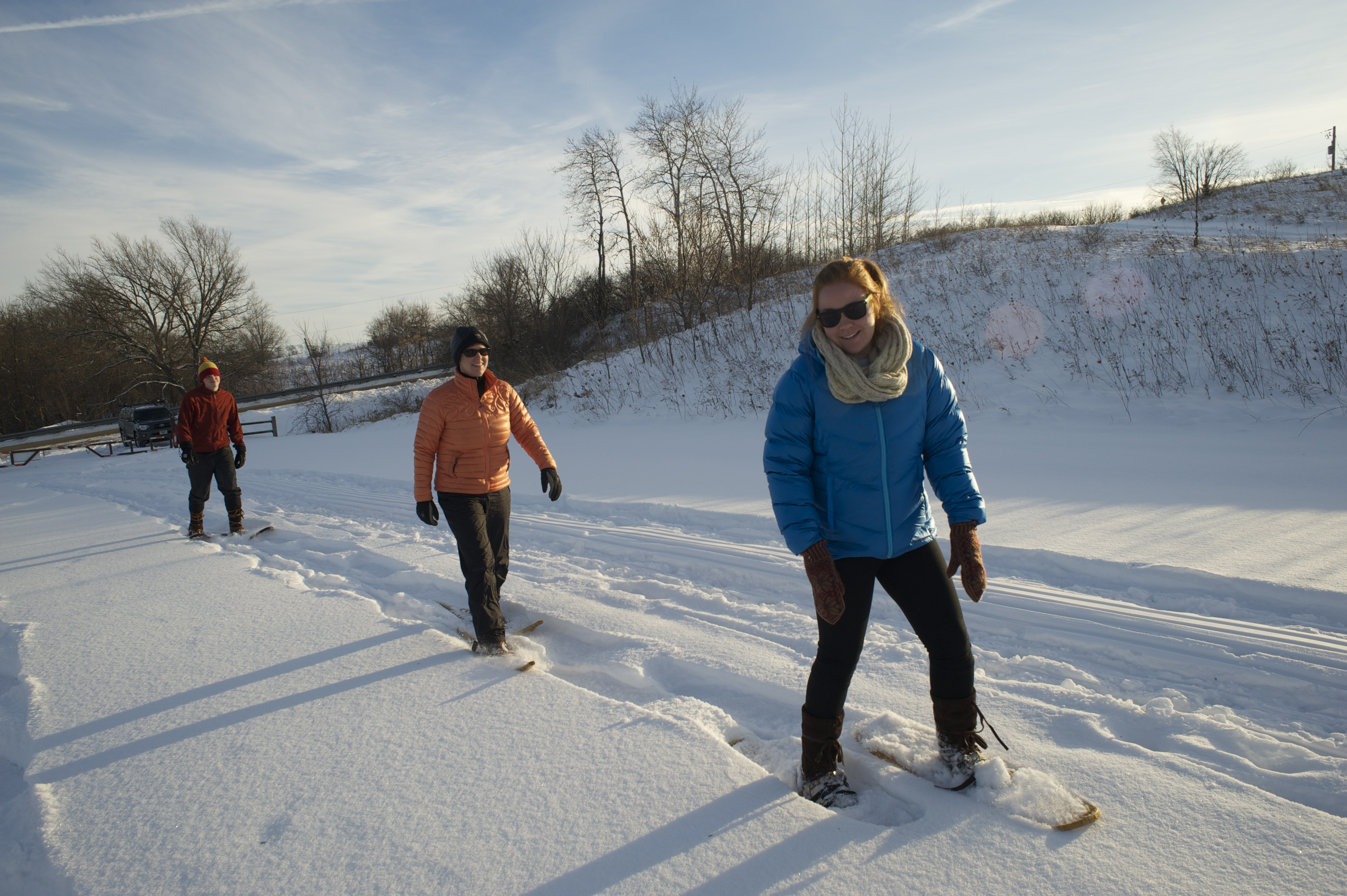
Nearly 30 years of experimenting has produced beautiful, practical snowshoes
by Darren Bush
Building snowshoes has become a passion of mine. After all, the water isn’t always liquid, my canoes and kayaks need to rest in the winter, and to every thing there is a season. In this case, it’s snowshoe season.
My first snowshoe season started in November 1987. We were poor students. Stephanie was pregnant and we were living in an efficiency apartment that was very efficient. We were going a little stir crazy in fact, and we needed to get out of town for a long weekend. We had no idea what to do.
This was pre-Internet, but somehow we found out about a snowshoe-building course being held at Mosquito Hill Nature Center in New London, Wisconsin. We sent in our deposit and they sent us snowshoe frames to varnish (somehow we found a place to do it) and bring with us to the center a few weeks later.
After a few days of drilling, riveting and lacing, we each had a pair of snowshoes. They were proudly displayed in our little apartment. We used them, once to walk to the grocery store half a mile away to get groceries when we got 16 inches of snow in a day. The employees were shocked.
And I was hooked. Floating over the snow past igloo-like cars along the street, I found my winter place.
Taking a turn at teaching
A few years passed with raising kids, grad school and a busy life. But in the early ‘90s I had the urge to lace again. At this point we had Internet, through which I found Country Ways, a Minneapolis-based company that produces and sells snowshoe kits. I ordered a few and started lacing again. I made them for family and friends, enjoying the process as much as the use of them.
Somehow the Director of the MacKenzie Environmental Center found out I was building snowshoes and contacted me. He wanted to know if I would teach snowshoe-building classes, and I enthusiastically said yes, not really thinking it through. Let’s see, 16 students in a class, two of us running around the room all weekend, helping individuals make small corrections and giving the bad news when mistakes were discovered five or six stages too late. Ouch.
I had some profound experiences with some of the students. One gentleman was just not getting the lacing pattern, even with a lot of coaching. His snowshoe looked like it was laced by a spider who drank too much coffee. He smiled and said, “I’m good with it,” and continued.
It wasn’t until the second day at lunch when I learned from his wife that he had suffered a traumatic brain injury at work. He was an engineer and was accustomed to perfection. He recognized his snowshoes weren’t perfect but he just couldn’t see why. His wife was so happy, nevertheless. This was the first time her husband had done such detail work since his injury almost five years earlier. His ‘shoes were not symmetrical, but they worked just fine. I learned that perfection is entirely relative.
Experimenting pays off
As the kids grew older and weekends became more precious, I stopped teaching classes, but kept building for fun. I was to the point where I could lace a kit in my sleep. But I wanted to push myself to the next level, so I asked Greg at Country Ways if he’d just sell me a frame or two with which I could experiment. He said, “Sure.”
Normally the lace used for kits is three-eighths-inch to a half-inch wide. But I knew that most traditional shoes had a much tighter lacing pattern, using a finer lacing material. I found some one-fourth-inch black lacing and experimented with different ways of lacing. I made tons of mistakes but eventually I figured out the math and what it took to make a shoe aesthetically pleasing with the performance characteristics I desired.
At that point I started looking for lacing that was even finer than the one-fourth inch. After exhaustive Internet searches and pleading, I found a company that would weave three-sixteenth-inch flat nylon tubing for me. I had to buy 1,000 yards at a time, though. It was go big or go home.
I went big. Two large boxes showed up at the shop. It was stark white, and even with three coats of spar varnish, they were still a only lightly colored. So I bought the cheapest box of generic black tea, dumping 20 bags into a gallon jar and steeped a dark stain that I hoped would approximate rawhide, but would be more durable and uniform. I packed 400 feet of lacing into the jar (enough for a pair of snowshoes) and let it set overnight, took it out and let it dry over the laundry sink in the basement.
For the record, my wife is a saint.
The laces took the tea stain well. I was delighted with the result when a pair was laced and varnished. People would ask me where I bought my rawhide. That’s always a good sign.
I bought more frames and experimented with more lacing patterns, shaping the frames to lighten them up without sacrificing strength, even using a gunstock stain on a pair. I was having fun playing.
A mountain division’s worth
Now the playing continues. I’ve built a steam box and I’m building forms to steam bent ash frames. I’m building forms for kids’ ‘shoes, which are not commercially available because they’re not considered profitable. The good news is that I don’t care about their commercial value. I care about kids getting outside, because I can.
The best part about this quasi-obsession is what it has done for family and friends. As you might assume, my collection of snowshoes has grown significantly. Sure, I’ve sent a few to friends around the country when it seemed like the right thing to do. Funny how that works. But I’ve retained enough snowshoes to supply the 10th Mountain Division, which means I can take entire families and youth groups outside when most people want to be huddled in front of a screen of some sort.
Unlike when Nordic skiing, I can hold hands with my wife while we walk side by side over meadows and fields. I can stop and take pictures without sliding around. I can go slower. I like slower.
I still like skiing with friends, of course, but I find my skis getting dustier every year and my snowshoes basically living in the back of my truck, always ready for a quick jaunt should the mood strike me.
I don’t know what the next experiment will bring. I’ve started doing repairs on rawhide shoes for folks who can’t find anyone else to do it. It brings me great satisfaction to have an older gentleman bring me a pair of mouse-chewed shoes that belonged to his grandfather, knowing that they’ll be in use again after six or seven decades of storage in a basement or barn.
I’m starting to mess around with different accent woods, copper riveting and doing some chip carving on the frames just for fun.
My wife doesn’t go anywhere without her knitting. Unfortunately, I can’t do the same thing as snowshoes are a little more unwieldy. But I understand why she always has something on her needles. It’s a nice combination of a meditative activity that produces something beautiful, and who can’t use a little more beauty in this world?
Darren Bush is owner and chief evangelist of Rutabaga Paddlesports in Madison, Wisconsin, and forges snowshoes and other things in his garage workshop. He blogs at canoelover.com and can be reached at [email protected].

